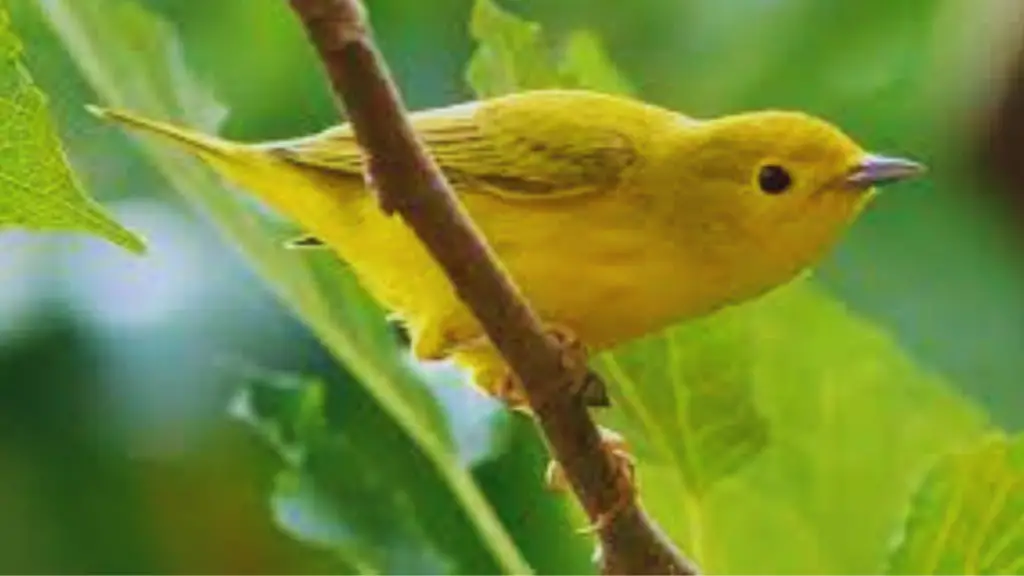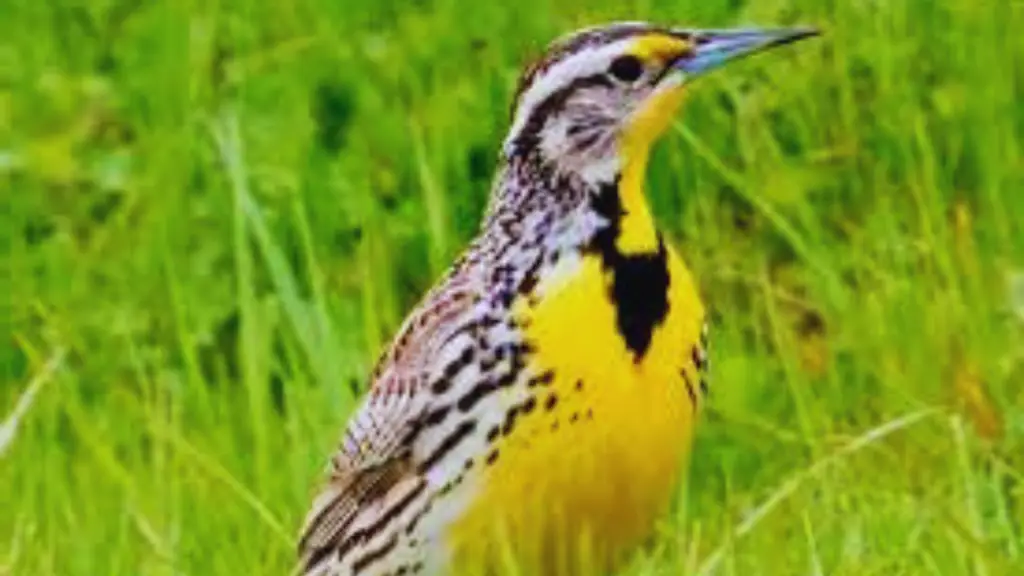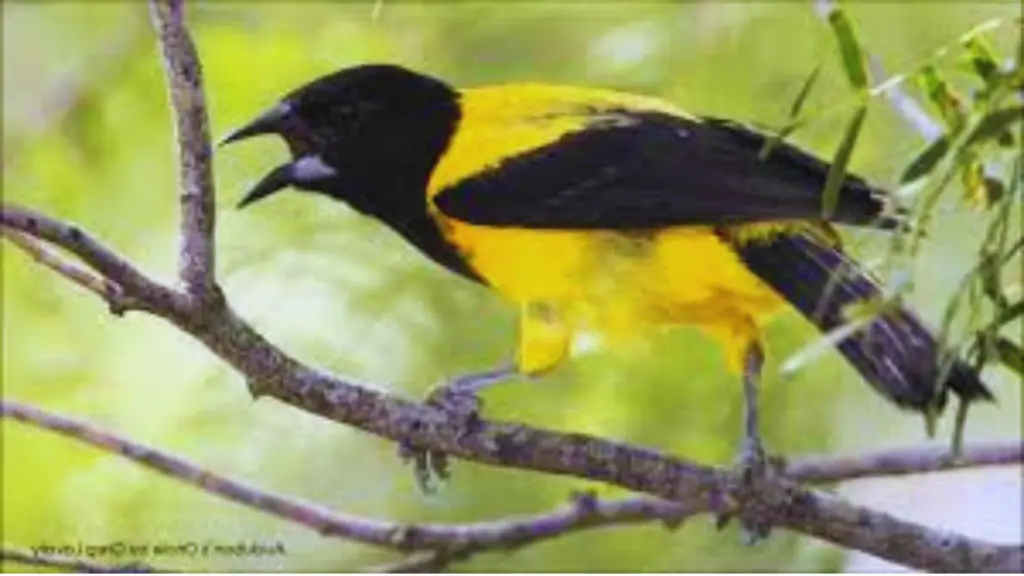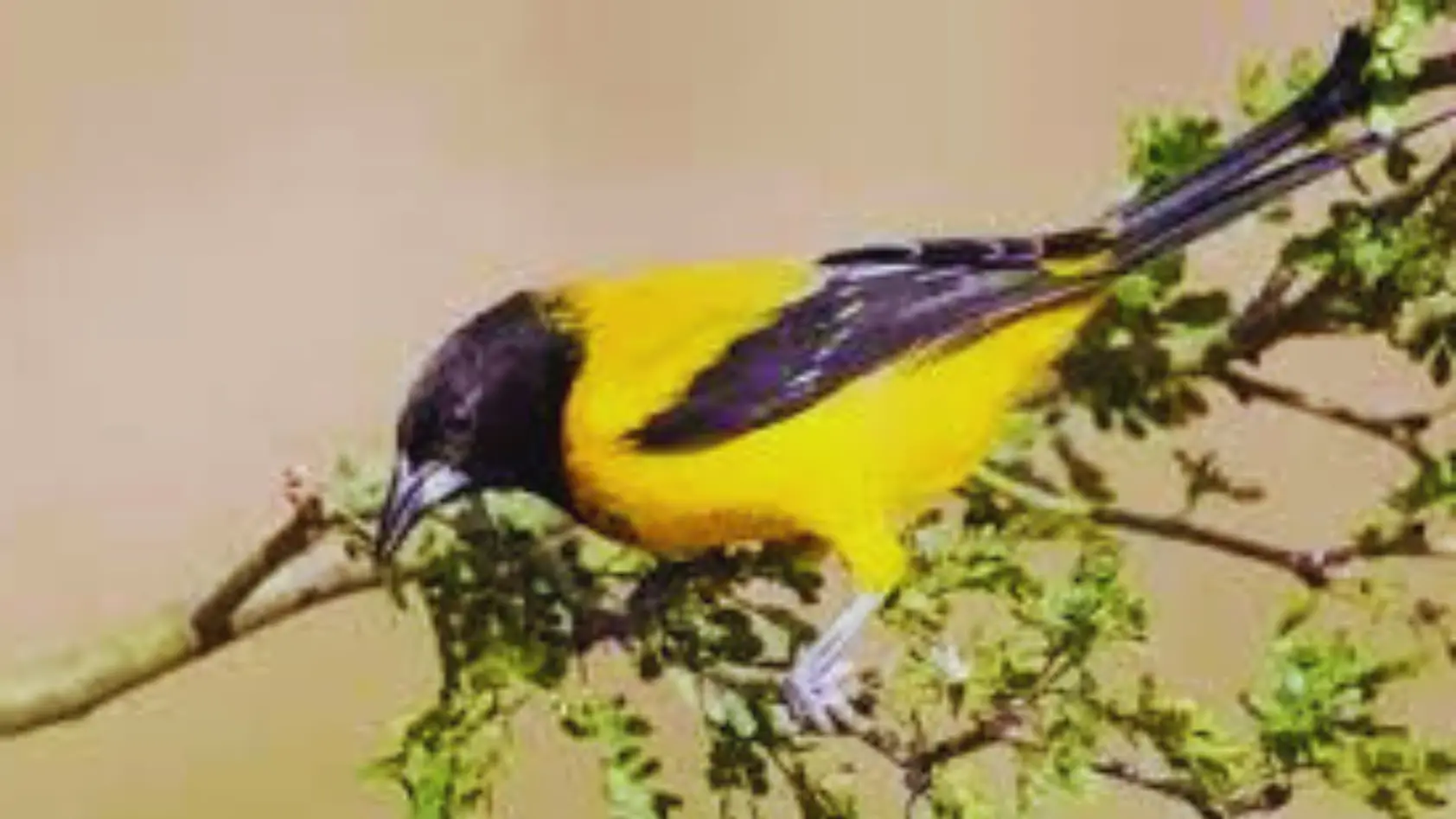If you’re a bird enthusiast, Texas is a must-visit destination. The state is home to a diverse range of bird species, including some of the most colorful and striking yellow birds. Whether you’re a seasoned bird watcher or a novice, Texas has plenty to offer in terms of birding opportunities. Looking for a little bit of beauty in your life? Check out these beautiful yellow birds in Texas!
In this guide, we’ll take a closer look at the beautiful yellow birds of Texas. From finding them in their natural habitats to identifying their unique behaviors, we’ll explore all the aspects of these stunning creatures.
Key Takeaways
- Yellow birds are a common sight in Texas, adding to the state’s already rich biodiversity.
- There are several birding hotspots in Texas where you can easily spot yellow birds in their natural habitats.
- Conservation efforts are necessary to protect and preserve yellow bird populations in Texas.
Exploring Bird Species in Texas
If you are a bird enthusiast, Texas is a great place to explore the world of bird species. The state boasts a remarkable diversity of birds, and some of the most striking are those featuring yellow plumage.
Texas is home to over 640 bird species, and many of these can be found in various habitats throughout the state. From the stunning Prothonotary Warblers that inhabit the coastal wetlands to the striking American Goldfinches that forage in open fields and gardens, Texas offers a wide variety of birdwatching opportunities.
In Texas, you can also find the endangered Golden-cheeked Warbler, which is endemic to the state’s central and southern regions. Males of this species feature striking yellow markings on their faces and underparts, making them a must-see for bird enthusiasts.
Exploring Yellow Bird Species in Texas
Of course, a major attraction for bird lovers in Texas is the chance to spot species featuring brilliant yellow plumage. Some of the most common yellow bird species in Texas include:
| Bird Name | Scientific Name |
|---|---|
| American Goldfinch | Spinus tristis |
| Common Yellowthroat | Geothlypis trichas |
| Northern Yellow Warbler | Setophaga petechia |
| Yellow-billed Cuckoo | Coccyzus americanus |
| Yellow Warbler | Setophaga petechia |
These birds vary in size and shape, with unique behaviors and vocalizations. The American Goldfinch, for example, is a small bird that is often seen feeding on thistle and sunflower seeds. The Yellow Warbler, on the other hand, is a migratory bird that can be heard singing a sweet, melodic tune throughout the spring and summer months.
With so many species to observe and appreciate, Texas offers a wealth of opportunities for bird enthusiasts. Whether you are a seasoned birder or a beginner, exploring the diverse birdlife in Texas is sure to be a rewarding experience.
Finding Yellow Birds in Texas

Yellow birds can be found throughout Texas, but locating and identifying them can be a challenge. Here are some tips to help you spot these beautiful birds:
Visit Popular Bird Watching Locations
Many national parks, wildlife refuges, and nature centers in Texas offer excellent bird watching opportunities, including sightings of yellow birds. Some of the most popular locations for seeing yellow birds include:
- Big Bend National Park
- Chisos Basin
- Rio Grande Valley
- Galveston Island State Park
- San Jacinto Battleground State Historic Site
Use Field Guides and Identification Apps
There are many field guides and identification apps available that can help you identify yellow birds in Texas, such as:
- The Sibley Guide to Birds
- The National Geographic Field Guide to the Birds of North America
- The Merlin Bird ID App
- The Audubon Bird Guide App
Pay Attention to Plumage and Behaviors
Yellow birds have distinctive plumage and behaviors that can help you identify them. Look for bright yellow feathers, black markings, and unique behaviors such as foraging in trees or singing loudly.
With these tips, you’ll be better equipped to locate and identify the many species of beautiful yellow birds that call Texas home.
Migration Patterns of Yellow Birds in Texas

Food availability, weather patterns, and breeding habits are just a few of the variables that affect the distinctive migration patterns of yellow birds in Texas. Most yellow bird species found in Texas are migratory, meaning they travel long distances to breed and winter.
Yellow Warblers, for example, arrive in Texas around April-May after wintering in Central and South America. They breed and raise their young until August-September before embarking on a long journey back to their wintering grounds. Similarly, the Prothonotary Warbler breeds in Texas during the summer and then migrates to Central and South America for the winter.
Other yellow bird species, such as the American Goldfinch, are considered partial migrants, as they may remain in Texas year-round but move to different locations within the state depending on the season. For example, American Goldfinches may migrate from rural areas to urban and suburban environments in search of food during the winter months.
Climate change is also impacting migration patterns for some yellow birds in Texas, such as the Black-throated Green Warbler and the Yellow-rumped Warbler. These species are shifting their ranges northward as temperatures increase, which is altering their breeding and migration patterns.
Overall, studying migration patterns is crucial for understanding the life cycle and ecology of yellow birds in Texas, and it underscores the importance of conserving their habitats throughout the state.
Yellow Bird Habitats in Texas
Texas is home to an array of habitats where yellow birds can be found. These habitats provide the necessary resources for yellow birds to survive, including food, water, and shelter. Understanding the different habitats where yellow birds live is key to identifying and observing them in the wild.
The following habitats are some of the most common places where yellow birds can be spotted in Texas:
| Habitat Type | Description |
|---|---|
| Forests | Yellow birds can be found in both deciduous and coniferous forests, particularly in the eastern and central parts of Texas. Look for them in the canopy, where they feed on insects and berries. |
| Grasslands | The grasslands of Texas, particularly in the western region, are home to several species of yellow birds, including the western meadowlark and the yellow-breasted chat. These birds can be found foraging for insects and seeds in the grass. |
| Wetlands | The wetlands of Texas provide critical habitat for many species of yellow birds, including the yellow-headed blackbird and the prothonotary warbler. These birds can be found near water sources, feeding on insects and aquatic plants. |
While these are some of the most common habitats where yellow birds can be found in Texas, it’s important to note that they can also be spotted in other areas, such as urban parks and residential neighborhoods.
Knowing where to find yellow birds is just the first step. To improve your chances of spotting them, it’s also important to learn about their behaviors and calls. The more you know about these beautiful birds, the more likely you are to appreciate them and work to protect their habitats.
Conservation Efforts for Yellow Birds in Texas

Yellow birds in Texas face several threats to their populations, including habitat loss and fragmentation, climate change, and predators. As a result, several conservation efforts are in place to protect and preserve these birds.
One of the most significant conservation initiatives in Texas is the establishment of protected habitats and nature reserves. These areas provide a safe haven for yellow birds to breed, feed, and migrate without facing human disturbances. Organizations such as the Texas Parks and Wildlife Department work closely with landowners, private organizations, and government agencies to create and maintain these protected areas.
The Texas Parks and Wildlife Department also collaborates with researchers, scientists, and volunteers to monitor yellow bird populations and their habitats. Through bird surveys, data collection, and analysis, they can better understand the behavior and ecology of yellow birds and develop more effective conservation strategies.
In addition to these efforts, public awareness campaigns and educational programs are critical in promoting the conservation of yellow birds in Texas. These programs help raise awareness about the importance of protecting these birds and their habitats and encourage the public to take action in their conservation.
If you are interested in supporting yellow bird conservation efforts in Texas, there are several ways to get involved. You can volunteer with organizations that work to protect wildlife habitats, donate to conservation funds, participate in citizen science initiatives, and advocate for policies and regulations that prioritize the protection of yellow birds and their habitats.
Notable Yellow Bird Species in Texas
If you’re a bird enthusiast, Texas is the perfect location to spot a variety of yellow birds. Some of the most notable species found in the state include:
| Bird Species | Description |
|---|---|
| American Goldfinch | A small finch with bright yellow feathers and black and white wings. Known for its melodic song. |
| Prothonotary Warbler | A small songbird with vibrant yellow feathers and a distinctive blue-gray head. Often found near wetlands and streams. |
| Yellow Warbler | A small songbird with bright yellow feathers and reddish-brown streaks on its breast. Known for its sweet song. |
| Northern Parula | A small warbler with blue-gray feathers and a bright yellow chest. Often found in deciduous forests. |
These are just a few of the many yellow bird species that call Texas home. Keep an eye out for them in their natural habitats and listen for their beautiful songs.
Attracting Yellow Birds to Your Yard in Texas
If you want to attract yellow birds to your yard in Texas, there are several things you can do to create an inviting environment for these beautiful avian creatures.
Provide Bird Feeders
One of the easiest ways to attract yellow birds to your yard is by providing bird feeders. Make sure to choose feeders that are specifically designed for small birds and fill them with sunflower seeds, nyjer, and millet, which are all favorites of yellow birds.
Plant Native Flowers and Shrubs
Yellowbirds are attracted to gardens that contain native flowers and shrubs, which provide both food and shelter. Consider planting species such as Texas sage, wildflowers, and butterfly weed to create a natural habitat that yellow birds will love.
Create a Water Source
Yellow birds also need a reliable source of water, so consider adding a bird bath to your yard. Be sure to keep it clean and filled with fresh water, and place it in a shaded area to avoid overheating.
Avoid Pesticides and Herbicides
Finally, keep in mind that yellow birds are sensitive to pesticides and herbicides, so try to avoid using these chemicals in your yard. Instead, opt for natural pest control methods and organic gardening practices.
By following these tips, you can create a welcoming oasis for yellow birds in your own backyard, allowing you to enjoy their beauty up close and personal.
Birding Hotspots for Yellow Bird Enthusiasts in Texas
If you’re looking to spot some of the vibrant yellow birds that call Texas home, you’re in luck: the Lone Star State is filled with fantastic birding hotspots that offer ample opportunities for observing these feathered beauties in their natural habitats. Here are some of the top locations to add to your birding itinerary:
Anahuac National Wildlife Refuge
A must-visit destination for birding enthusiasts, Anahuac National Wildlife Refuge is located just an hour’s drive east of Houston and boasts a diverse range of habitats, including wetlands, prairies, and forests. Some of the yellow bird species you may encounter here include the Prothonotary Warbler, American Goldfinch, and Common Yellowthroat.
Lost Maples State Natural Area
This picturesque park in the Texas Hill Country is a favorite among birders thanks to its diverse range of bird species, including several that exhibit yellow plumage. Keep an eye out for the Golden-cheeked Warbler, Yellow-throated Warbler, and Pine Warbler.
Bentsen-Rio Grande Valley State Park
Situated in the heart of the Rio Grande Valley, this state park offers some of the best birdwatching opportunities in the region. Visitors can expect to spot a variety of yellow bird species here, including the Altamira Oriole, Hooded Oriole, and Golden-fronted Woodpecker.
Big Bend National Park
This expansive park in West Texas is a haven for birders, boasting more than 450 bird species that have been recorded within its boundaries. Among them are several striking yellow birds, such as the Yellow Warbler, Yellow-throated Vireo, and Scott’s Oriole.
Aransas National Wildlife Refuge
Situated along the Gulf Coast, this sprawling wildlife refuge is a prime spot for observing the vibrant yellow-hued American Goldfinch, as well as the bright orange Altamira Oriole, which boasts a striking yellow bib.
Whether you’re an experienced birdwatcher or a novice, these hotspots offer plenty of opportunities to observe Texas’s beautiful yellow birds up close and in person. Just be sure to bring your binoculars and a good camera to capture these feathered treasures in all their glory.
Unique Yellow Bird Behaviors in Texas
Yellow birds in Texas exhibit a range of fascinating behaviors that are worth observing and learning about. From intricate courtship displays to creative nesting habits, these birds are full of surprises.
Courtship Displays
Male yellow birds often put on elaborate courtship displays to attract a mate. In some species, males will sing complex songs while puffing out their chests and displaying their vibrant yellow plumage. Other species engage in aerial displays, where males fly high in the sky and perform acrobatic maneuvers to impress females.
Nesting Habits
Yellow birds in Texas build a variety of unique nests that cater to their specific needs. Some species, such as the yellow warbler, construct cup-shaped nests made of grass and plant fibers, whereas others, like the prothonotary warbler, build their nests in the hollows of trees. The Bullock’s oriole even weaves intricate nests that hang from the tips of branches.
Feeding Preferences
Yellow birds in Texas have diverse diets that range from insects and fruits to nectar and seeds. The black-throated sparrow is known for its love of seeds, often foraging on the ground for grass and weed seeds. The yellow-breasted chat, on the other hand, enjoys a varied diet of insects, berries, and nectar.
Observing these unique behaviors can be a rewarding experience for any bird enthusiast in Texas.
Threats to Yellow Birds in Texas
Despite their beauty and significance, yellow birds in Texas face a number of threats that put their populations at risk. These threats include:
| Threats | Description |
|---|---|
| Habitat Loss | The destruction and fragmentation of natural habitats due to human activities like urbanization, agriculture and logging pose a significant threat to yellow birds in Texas. |
| Climate Change | The changing climate in Texas has altered the timing and patterns of seasons, which in turn affects migration patterns, breeding and nesting of yellow birds. |
| Predators | Natural predators like cats, snakes and birds of prey pose a significant threat to the survival of yellow birds, particularly during nesting and breeding periods. |
Other potential threats to yellow birds in Texas include pollution, disease, and the spread of invasive species.
Recognizing and addressing these threats is essential to ensuring the conservation and survival of yellow birds in Texas. By supporting local conservation initiatives, avoiding the use of harmful pesticides and fertilizers, and promoting sustainable land use practices, you can help protect these beautiful birds for generations to come.
Citizen Science and Yellow Bird Monitoring in Texas
As a yellow bird enthusiast in Texas, you can take part in citizen science initiatives to help monitor and protect these beautiful creatures. In order to better understand bird populations and behaviors, scientists and conservationists can use data and observations gathered from the general public through citizen science.
One such initiative is the Texas eBird program, which allows bird watchers to report their sightings and contribute to a vast database of bird observations across the state. By recording your yellow bird sightings and submitting them to the eBird program, you can help researchers track migratory patterns, breeding behavior, and population trends.
You can participate in bird banding and monitoring programs run by organizations like the Audubon Society and the Texas Parks and Wildlife Department if you prefer a more hands-on approach. These programs involve trapping birds, placing identification bands on their legs, and recording data about their age, sex, and health. This information can help researchers learn more about yellow bird populations and their movements throughout the state.
By contributing to citizen science initiatives, you can play an active role in the conservation of yellow birds in Texas. Your observations and data can help inform policy decisions and protect these beautiful birds for generations to come.
Conclusion
Congratulations, you now have a colorful guide to the stunning yellow birds of Texas! From the vibrant American Goldfinch to the majestic Yellow-headed Blackbird, Texas is home to a remarkable variety of yellow birds that are sure to capture your attention.
Whether you’re an experienced birder or a beginner, there are countless opportunities to see these beautiful creatures in action. From exploring top birding hotspots to attracting yellow birds to your own backyard, there are many ways to enjoy and appreciate the natural beauty of these avian wonders.
However, it’s important to remember that yellow birds in Texas face a number of threats, including habitat loss, climate change, and other environmental factors. By supporting conservation efforts and contributing to citizen science initiatives, you can help protect and preserve yellow bird populations for future generations to enjoy.
So get out there and start exploring the world of yellow birds in Texas! With their stunning plumage, unique behaviors, and fascinating migratory patterns, these beautiful creatures are sure to capture your heart and fill you with wonder and awe.
FAQ
Q: What are some notable yellow bird species found in Texas?
A: Some notable yellow bird species found in Texas include the Yellow Warbler, American Goldfinch, and Western Tanager.
Q: Where can I go bird watching in Texas to spot yellow birds?
A: There are several birding hotspots in Texas where you are likely to spot yellow birds, such as High Island, South Padre Island, and Big Bend National Park.
Q: How can I attract yellow birds to my yard in Texas?
A: To attract yellow birds to your yard in Texas, consider setting up bird feeders with sunflower seeds, planting native flowers and shrubs that provide food and shelter, and providing a water source such as a birdbath.
Q: What are the migration patterns of yellow birds in Texas?
A: Yellow birds in Texas typically follow a north-south migration pattern, with some species spending the summer breeding season in Texas and then migrating to Central or South America for the winter.
Q: What are the main threats to yellow birds in Texas?
A: The main threats to yellow birds in Texas include habitat loss due to urbanization and agricultural expansion, climate change impacting their breeding and feeding habitats, and predation by invasive species.
Q: How can I contribute to yellow bird monitoring in Texas?
A: You can contribute to yellow bird monitoring efforts in Texas through citizen science initiatives, such as participating in bird counts, reporting sightings to local birding organizations, and volunteering for research projects.













